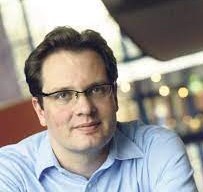The '3D Cadastral Survey Data Model and Exchange' (3D CSDM) project aims to enable, as far as possible, a standard way of transferring cadastral survey datasets in all nine Australian states and territories and New Zealand. It aims to create a solution that will be supported by the survey software suppliers operating in the Australian and New Zealand market. It is intended to enable surveyors to progressively transition from lodging paper or PDF files to fully digital data. The project has two primary objectives:
- To develop a harmonised data model that covers all cadastral survey data components required by the nine New Zealand and Australian cadastral agencies. This includes both 2D and 3D elements.
- To identify, in liaison with survey software suppliers, options for encoding and exchanging the data in the model.
 Peter Buist
Peter BuistStatus of Galileo: Galileo has made significant progress in recent years: twenty-six Galileo satellites are in-orbit, a significant part of the supporting ground station infrastructure has been deployed, the European Agency for the Space Programme (EUSPA) has assumed the role of the Galileo Service Provider, various new Galileo services are being tested, and the 2nd generation of the system is already under definition. To support Galileo's service phase, a service facility called the Galileo Reference Centre (GRC) was established. The centre plays an important role in the Galileo service provision as it permits EUSPA to independently monitor the performance of the services delivered to users, and serves as the door through which European Union (EU) Member States (MS) can contribute to these tasks. New Galileo Services: Galileo has recently started testing Open Service Navigation Message Authentication (OS-NMA) and High Accuracy Service (HAS) in the signal-in-space. Galileo's OS-NMA is an authentication protocol that allows GNSS receivers to verify the authenticity of part of the Galileo information, making sure that the navigation message they receive are indeed from Galileo and have not been modified in any way. Galileo's HAS will provide free of charge high accuracy PPP corrections in an open format for multi-constellation and frequencies through the Galileo signal (E6-B) and Internet. It will offer real-time improved user positioning performances with accuracy less than two decimetres at two service levels: one global and the other one over Europe. Other services are also under way. These include, for example, the Emergency Warning Service (EWS), where the Galileo's messaging function is used to transmit, in case of an emergency, an alert to user devices. The alert will contain specific instructions to follow, which depend on the area the user is located in. Galileo for Surveying: With Galileo's progress, new opportunities occur also for the surveying application: Galileo-only RTK with cm-level accuracy has been possible for some time (Galileo-only Cadastral boundary reconstruction of the GRC premises has been performed for the first time in July 2019) and the availability of the Galileo supported RTK solutions, benefitting from the high accuracy of its observables, will increase when more satellites become available. PPP solutions benefit, as well, in terms of convergence time, accuracy and robustness. The authentication features of Galileo's OS-NMA may prove to fill a gap in surveying; currently no generally accepted technology exists able to authenticate the position of the surveyor. With HAS, Galileo will pioneer free high-accuracy positioning service aimed at applications including 3D surveys that require higher performance than that offered by OS.